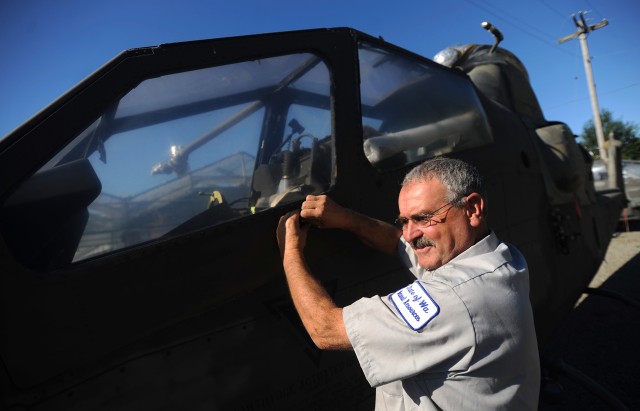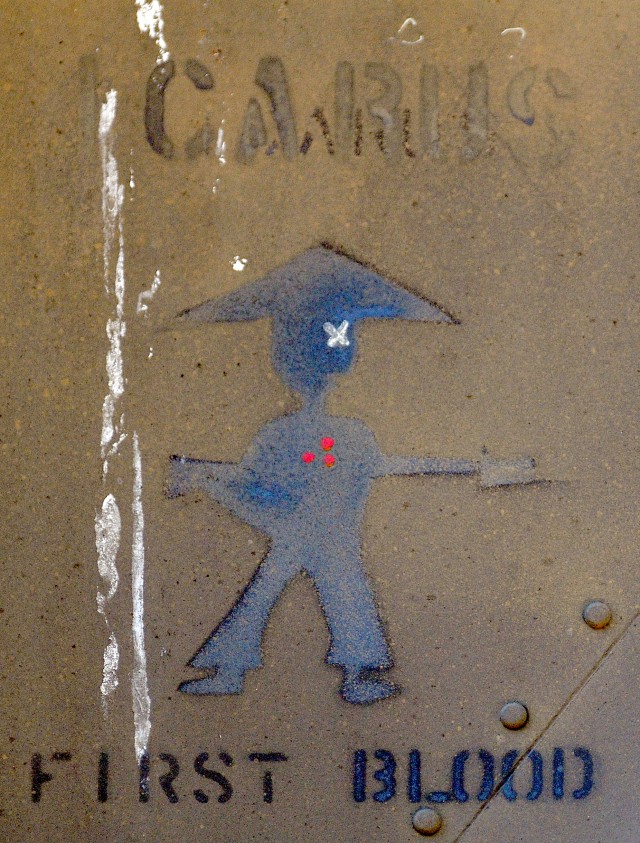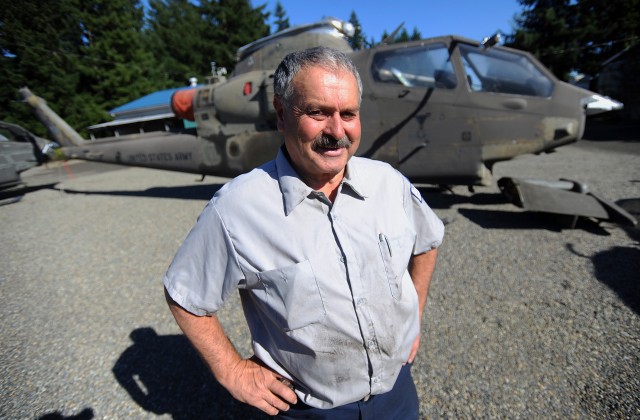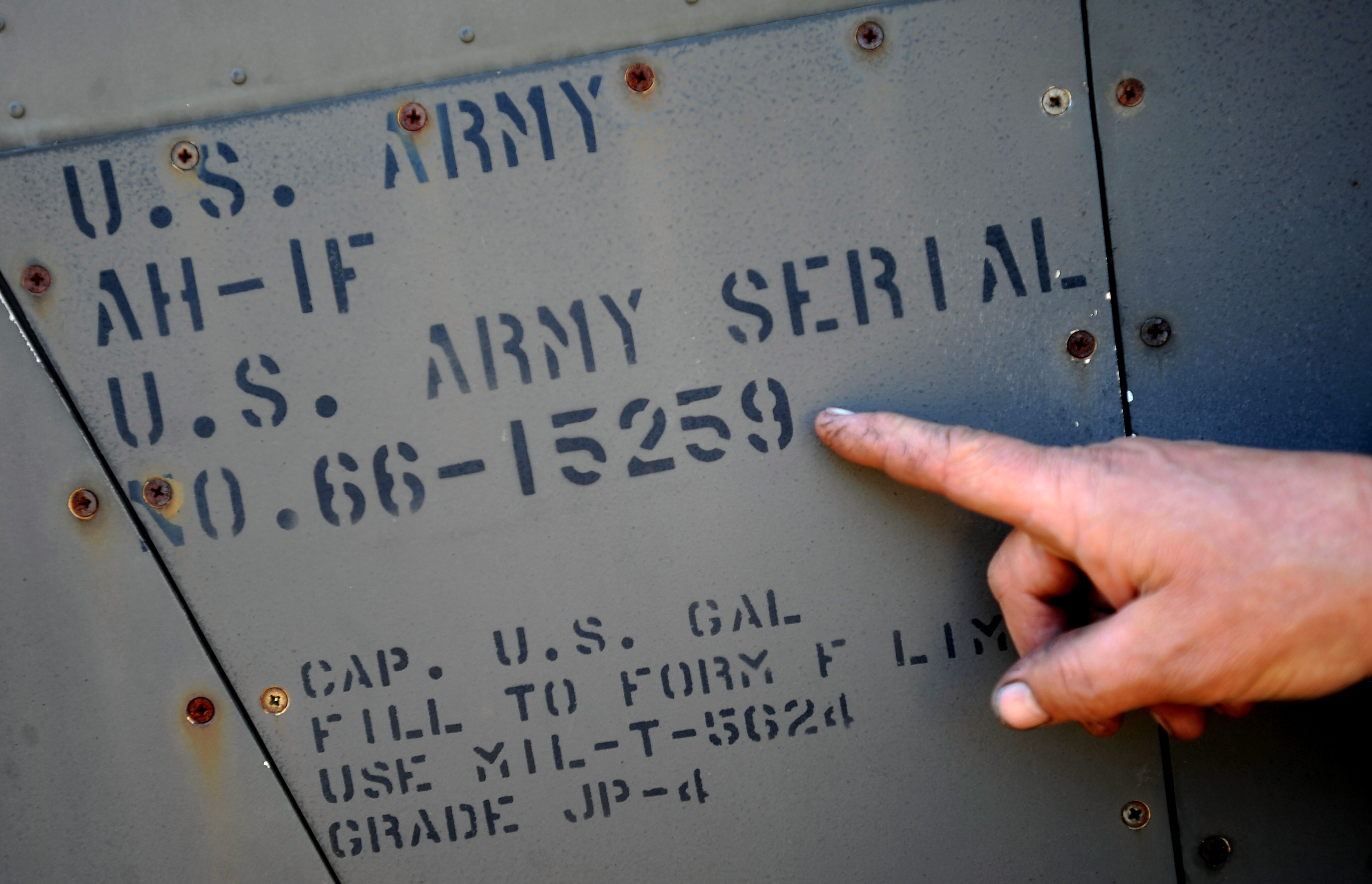TUMWATER, Wash. - Sitting amid storage sheds and greenhouses near Olympia, the old cobra looks exactly the same as the 12 other attack helicopters that surround it.
Literally moments from the chopping block, the slightly faded tail number on a surplus AH-1G attack helicopter saved a piece of history from being reduced to spare parts.
When Washington State Department of Natural Resources helicopter mechanic Tom Wojnar, an Army Vietnam War veteran, saw the number "66-15259," he instantly knew he was looking at a historic aircraft.
"Sixty-six was significant," Wojnar said. "That's an old helicopter. It had to be one of the first ones made."
In fact, because the tail number indicated the year of manufacture, it was most certainly one of the first 12 cobras produced in the world, he said.
"I immediately stopped removing parts from it," Wojnar said.
"Virginia Rose II" flew into the history books on Sept. 4, 1967 as the first AH-1G to fly in Vietnam.
The helicopter's next possible milestone remains debatable but according to online forums, the "Virginia Rose II" also scored the first combat kills in theater.
Wojnar served with the Signal Corps in Vietnam from 1968 to 1969. After completing his enlistment, he opted to return to the service via the National Guard where he trained as an aviation mechanic.
"I love working on cobras," Wojnar said. "When I was in, they were state-of-the-art."
Now, being around so many of the attack helicopters makes him feel like a kid in a candy store, he said.
Part of the DNR's "Helitack" Program, the cobras provide direct helicopter and firefighter support for initial and extended attack wildfire suppression operations within Washington State.
The state acquired 21 of the former Army helicopters through government surplus as both a cost-saving measure and to enhance their capabilities.
"We have five AH-1Gs that are operational right now," Wojnar said. "Not a bad investment at a dollar a piece."
Scavenging parts from several aircraft, along with ordering new parts, has helped create a fleet of unique rapid-response firefighting helicopters, he said.
After having identified the "Virginia Rose II," Wojnar said he hopes to find her a better home.
A couple of museums have already expressed interest, he said.
A tour of the aircraft reveals tail art depicting a silhouette of a Viet Cong soldier with three red dots on it. Also, upon closer inspection, the original three-color camo pattern can still be made out under the current olive drab paint scheme.
"It would make a great static display," Wojnar said.
It is possible that the "Virginia Rose II" might end up in Maryland as a display for the National Guard unit that originally sold the aircraft as surplus in 2001.
Time and budget cuts are the enemy right now, he said.
"The state could decide to end this program," Wojnar said. "If more people knew this aircraft was out here, it would stand a better chance of being preserved."
Rick Wood is a reporter with Joint Base Lewis-McChord's weekly newspaper, the Northwest Guardian.












Social Sharing